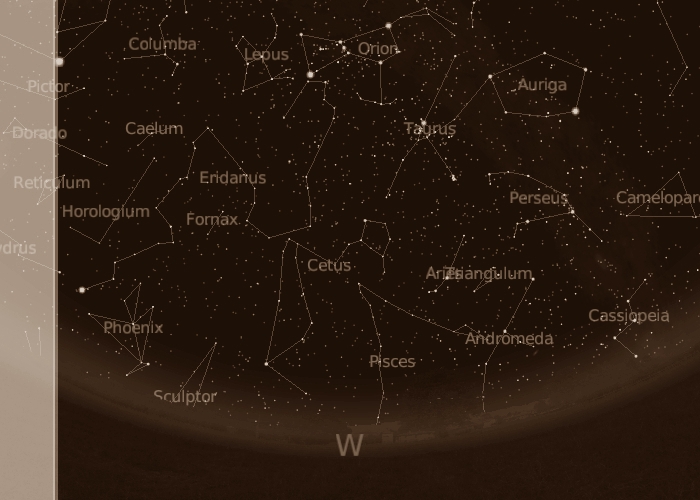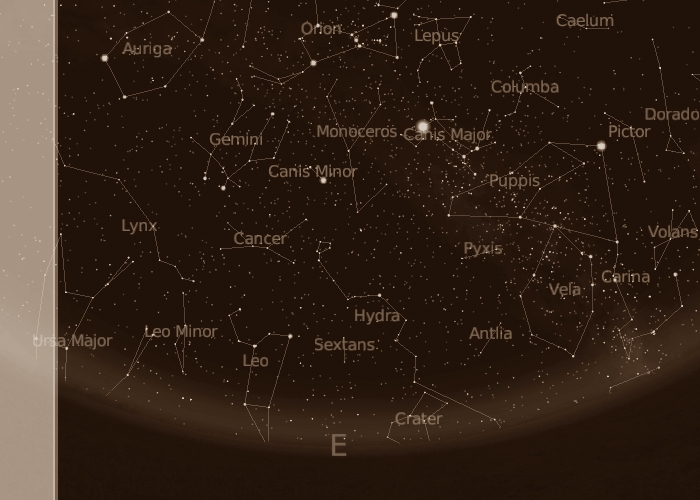Western Horizon
Eastern Horizon
![]()
Western Horizon
Eastern Horizon

It's the winter solstice sky! The winter solstice sky, at the tropics, has its main display South and southeast. It's there that the constellations which had been born, about 1750, from the ancient and vast constellation Argo, the Ship, are to be found, as they are embedded into the Milky Way. From Carina, the Ship's Keel, on the horizon, to Puppis, the Ship's Stern, through Vela, the Ship's Sails, as the most bright star there is Canopus. The Large Magellanic Cloud (LMC) is still high, to the lower right. Higher than Puppis, there lies Canis Major, the Great Dog, with Sirius, the sky's brightest star, as almost at the zenith, you'll find Orion, the Hunter. Orion is that large quadrilateral of stars, with three stars aligned in its center. Those stars are the 'Orion's Belt', as, below them, the faint -albright well seen- spot there, is the famed Orion Nebula, M42. Procyon, this other bright star, is seen left of Orion. It's the main star to the constellation Canis Minor, the Little Dog. Should you now turn West proper, see this fine show, how Eridanus, the River Eridanus, which takes its source to Rigel, of Orion, is meandering a long way, down to this bright star, Achernar! Cetus, the Whale, is anchored to the first bent of the river. It might that Eridanus have represented the Nile river. Northwest, high, the bright star is Aldebaran, of Taurus, the Bull. See, to its lower right, the Pleiades, this small, fine group of stars! Perseus, with Algol, is another fine view, as Triangulum, the Triangle, and Aries, the Ram are targets of interest too. Pisces, the Fishes are tending low at Andromeda too, with M31, the Andromeda Galaxy about of no worth now. to a printer-friendly chart
West for the mid-northern latitudes. West for the mid-southern latitudes

As the southeastern part of the sky is filled with the typical sky of the tropics's winter solstice, you'll find Procyon, back, this bright star, high, East. High too, to its left, you'll see another large quadrilateral of stars. That's Gemini, the Twins, as the two bright stars to the lower, smaller side, are the famed Castor and Pollux, from left to right. The sky, a row lower, is less populated. As the faint Lynx, the Lynx, is northeast, Hydra, the Hydra, a fine constellation, is beginning under Procyon. Cancer, the Crab, albeit a faint constellation, is of interest, as it's harbouring the famed M44, Praesepe, the Beehive, this open cluster. It's the round, grey circle on the chart. Leo, the Lion, at last, as it's barely risen, is a fine view, with the bright star, which is Regulus. to a printer-friendly chart
East for the mid-northern latitudes. East for the mid-southern latitudes
(color maps with Stellarium; printer-friendly charts with Cartes du Ciel, Patrick Chevalley)
Website Manager: G. Guichard, site 'Amateur Astronomy,' http://stars5.6te.net. Page Editor: G. Guichard. last edited: 12/28/2010. contact us at ggwebsites@outlook.com